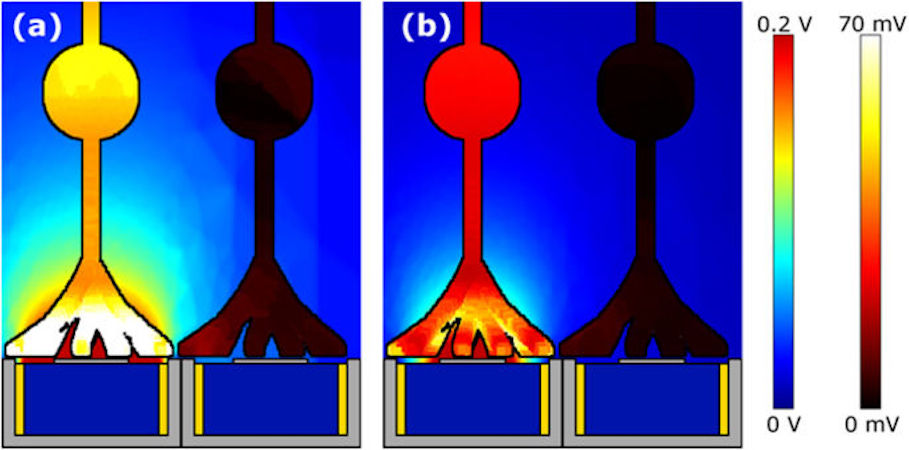William Watterson and Richard Taylor an the University of Oregon are in the early stages of developing fractal-shaped electrodes for use as retinal implants to restore sight. They believe that the square shape of previous generations of electrodes prevented their success. (86 per cent fail.) The fractal shape mimics the design of the neurons they interact with.
In simulations, the fractal design stimulated 90 per cent more neurons in the retina, while using less voltage than a traditional implant.
The team is working on shrinking the implants before they are tested on mice — therefore the possibility of human use is far off and not guaranteed — but the concept is promising.
Join ApplySci at Wearable Tech + Digital Health + NeuroTech Boston on September 19, 2017 at the MIT Media Lab – featuring Joi Ito – Ed Boyden – Roz Picard – George Church – Nathan Intrator – Tom Insel – John Rogers – Jamshid Ghajar – Phillip Alvelda – Michael Weintraub – Nancy Brown – Steve Kraus – Bill Geary – Mary Lou Jepsen – Daniela Rus
Registration rates increase Friday, July 28th.
ANNOUNCING WEARABLE TECH + DIGITAL HEALTH + NEUROTECH SILICON VALLEY – FEBRUARY 26 -27, 2018 @ STANFORD UNIVERSITY
